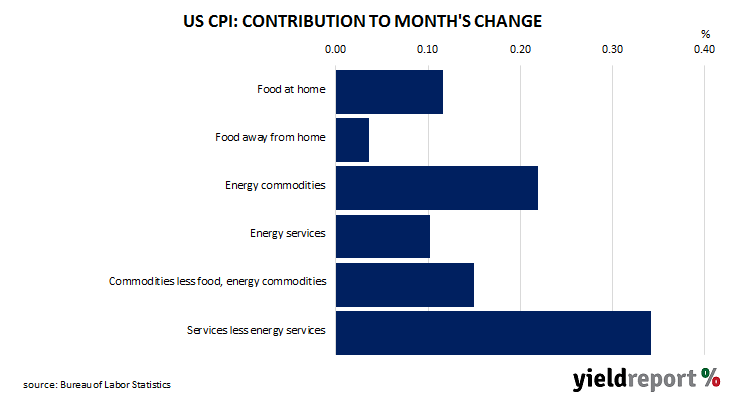Summary: US CPI up 1.0% in May, higher than expectations; “core” rate up 0.6%; “undermines” Fed expectations inflation would moderate in Q2; Treasury yields up materially, rate rise expectations firm considerably; alternative core measures suggest breadth of inflation pressures picks up; non-energy services again main driver of headline rise.
The annual rate of US inflation as measured by changes in the consumer price index (CPI) halved from nearly 3% in the period from July 2018 to February 2019. It then fluctuated in a range from 1.5% to 2.0% through 2019 before rising above 2.0% in the final months of that year. Substantially lower rates were reported from March 2020 to May 2020 and they remained below 2% until March 2021. Rates has risen significantly since then.
The latest CPI figures released by the Bureau of Labor Statistics indicated seasonally-adjusted consumer prices rose by 1.0% on average in May. The increase was higher than the generally expected figure of 0.7% and significantly more than April’s 0.3%. On a 12-month basis, the inflation rate accelerated from April’s reading of 8.2% to 8.5%.
“Headline” inflation is known to be volatile and so references are often made to “core” inflation for analytical purposes. Core inflation, a measure of inflation which strips out the more variable food and energy components of the index, increased by 0.6% on a seasonally-adjusted basis for the month. The rise was larger than the 0.5% expected as well as April’s 0.3% increase. Even so, the annual growth rate slowed from 6.1% to 6.0%.
“The May CPI release undermined Fed expectations that inflation would moderate in Q2 and we fully expect the Fed to make upward revisions to its inflation and fed funds rate projections,” said ANZ senior economist Felicity Emmett.
US Treasury bond yields rose materially on the day, although not at the ultra-long end. By the close of business, the 2-year Treasury yield had jumped 25bps to 3.07% and the 10-year yield had gained 11bps to 3.16%. The 30-year yield finished just 2bps higher at 3.19%.
In terms of US Fed policy, expectations of higher federal funds rates over the next 12 months firmed considerably. At the close of business, June contracts implied an effective federal funds rate of 1.10%, 27bps higher than the current spot rate. July contracts implied 1.46% while May 2023 futures contracts implied an effective federal funds rate of 3.75%, 292bps above the spot rate.
“Alternative core measures suggest the breadth of inflation pressures has actually picked up with the Cleveland Fed Trimmed Mean at 0.8%, its highest in the history of the series which dates back to 1983. Ditto for the year-on-year version at 6.5%,” said NAB senior economist Tapas Strickland.
Strickland noted Federal Reserve officials had recently stated monthly inflation data would influence their thinking regarding the size of increases at September’s FOMC meeting. In his opinion, these latest figures were high enough so the FOMC’s “…foot will still have to be on the pedal”
The largest influence on headline results is often the change in fuel prices. “Energy commodities”, the segment which contains vehicle fuels, increased by 4.5%, adding 0.22 percentage points. However, prices of non-energy services, the segment which includes actual and implied rents, again had the largest single effect, adding 0.34 percentage points after they increased by 0.6% on average.



